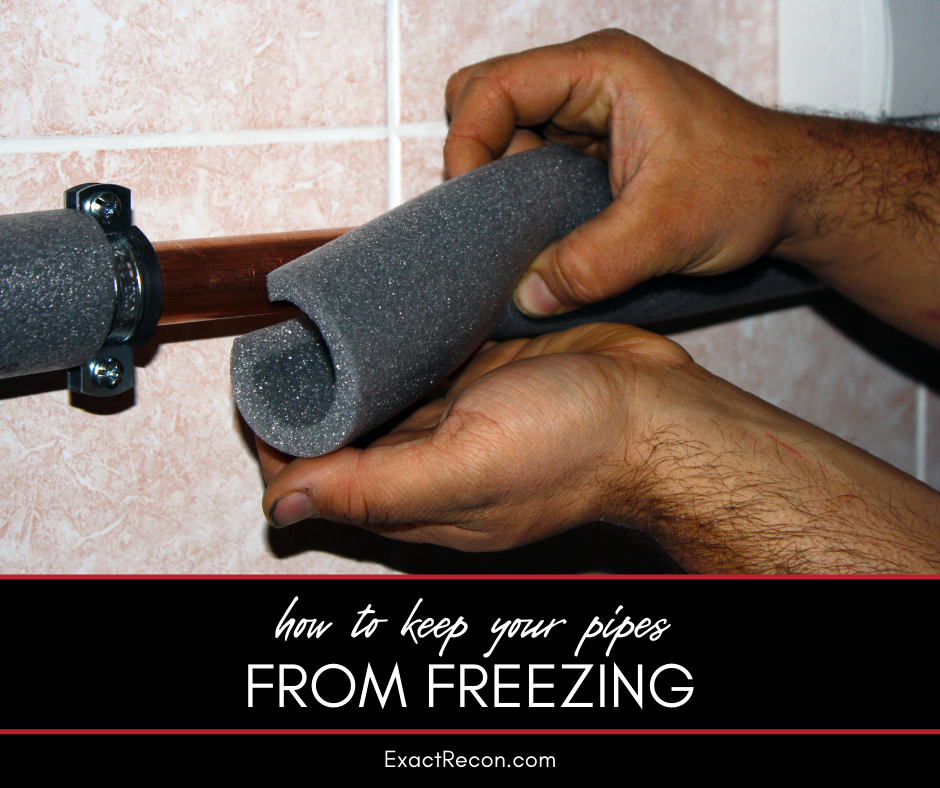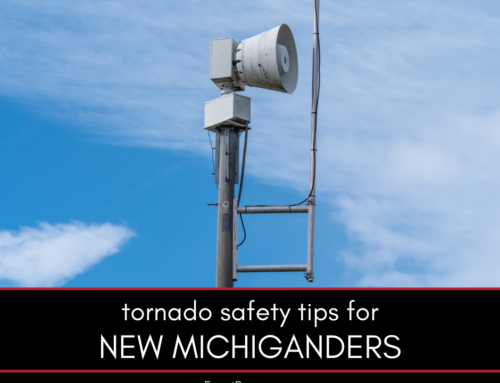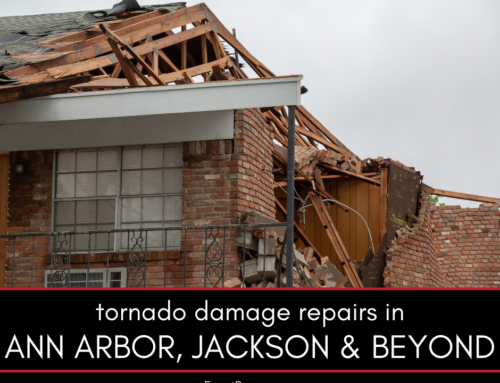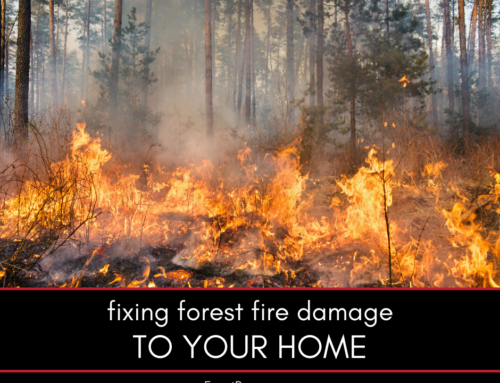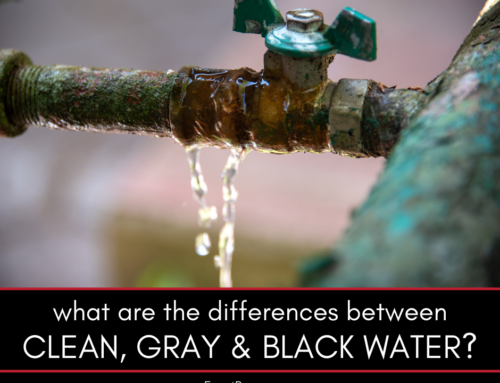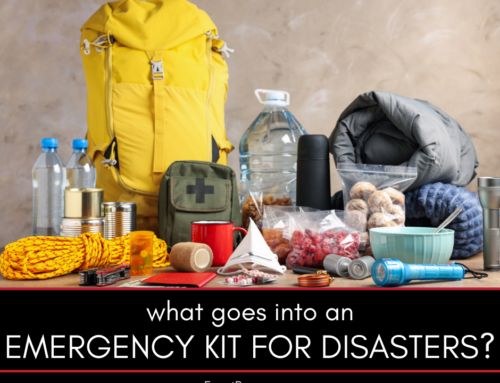Frozen pipes are a common winter hazard that can lead to burst pipes, costly repairs, and significant water damage. Taking preventive measures can help protect your home and avoid unnecessary expenses. Here’s a guide on how to keep your pipes from freezing this winter.
How to Keep Your Pipes From Freezing
Winterizing your pipes is essential to prevent freezing and protect your home from water damage. This guide covers:
- Insulating pipes in vulnerable areas
- Maintaining a consistent indoor temperature
- Allowing faucets to drip
- Opening cabinets to let warm air in
- Knowing when to call a professional
Here’s a closer look at each step.
Insulating Pipes in Vulnerable Areas
Pipes located in unheated or exposed areas—like basements, attics, garages, or crawl spaces—are especially prone to freezing. To protect these pipes, wrap them in foam insulation sleeves or apply heat tape, which provides a steady source of warmth. Pipe insulation is an affordable and effective way to reduce the risk of freezing, as it helps maintain water temperature even in colder parts of the house.
For extra protection, consider insulating walls and ceilings around exposed pipes, especially if they are near outdoor walls. The Federal Emergency Management Agency (FEMA) provides guidance on protecting homes from winter hazards, including the importance of pipe insulation.
Maintaining a Consistent Indoor Temperature
Keeping a steady indoor temperature, especially during very cold weather, can make a big difference in preventing frozen pipes. Set your thermostat to at least 55°F (13°C), even if you’re away from home. Maintaining this baseline temperature helps ensure that interior pipes stay warm enough to avoid freezing.
If you’re leaving home for an extended period, avoid turning off the heat completely. Instead, set the thermostat at a consistent temperature to keep the air warm and prevent frozen pipes. This small precaution can prevent large repair bills later on.
Allowing Faucets to Drip
Allowing your faucets to drip slightly can help prevent pipes from freezing, especially on extremely cold nights. By letting a small trickle of water run, you keep water moving through the pipes, which reduces the risk of freezing. Open both the hot and cold water taps slightly to ensure that all parts of the pipes remain protected.
This technique is especially useful for pipes located along exterior walls, where temperatures are colder. For pipes that are already at risk, dripping faucets can prevent pressure buildup that could otherwise lead to a burst pipe if freezing does occur. For more information on protecting plumbing systems from cold weather, visit the Environmental Protection Agency (EPA).
Opening Cabinets to Let Warm Air In
During particularly cold weather, open kitchen and bathroom cabinets to allow warm air to circulate around the pipes. This simple step can make a significant difference for pipes located on exterior walls, which are more susceptible to freezing. By opening cabinets, you let the warm air from your heating system reach otherwise enclosed areas, helping to prevent freezing.
Be cautious if you have small children or pets, as they may be able to access cleaning supplies or other hazardous items. Removing any dangerous products before opening cabinets is a good safety measure.
Knowing When to Call a Professional
If you’re concerned about pipes in particularly vulnerable areas or notice signs of freezing, it may be time to contact a professional. Experts like Exact Recon offer water damage restoration and can assist with insulation, pipe wrapping, and other preventative measures.
Professional assistance is especially beneficial if you live in an area prone to extreme cold or have experienced frozen pipes in the past. Exact Recon can help winterize your home effectively, reducing the risk of water damage from burst pipes. Consulting professionals ensures that your pipes are well-protected, giving you peace of mind throughout the winter season.
FAQ About Preventing Frozen Pipes
Check out these commonly asked questions about keeping your pipes from freezing. If you don’t see your question here, please call Exact Recon and we’ll find you the answers you need.
How Does Pipe Insulation Help Prevent Freezing?
Pipe insulation helps keep water temperatures above freezing, even in unheated areas. By reducing heat loss, insulation minimizes the risk of pipes freezing in cold weather.
Should I Leave My Heat On While Away in Winter?
Yes, keep your thermostat set to at least 55°F when you’re away. This keeps indoor pipes from freezing and helps maintain a consistent temperature throughout the house.
Why Should I Let Faucets Drip During Freezing Temperatures?
A dripping faucet keeps water moving through pipes, which helps prevent freezing. Moving water is less likely to freeze, especially on extremely cold nights.
What Should I Do if My Pipes Are Already Frozen?
If your pipes are frozen but not yet burst, you can use a hair dryer or space heater to warm the affected area slowly. Never use an open flame, as this can damage pipes. For severe cases, contact a professional like Exact Recon for assistance.
Can I Prevent Frozen Pipes Without Using Extra Heat?
Yes, sealing drafts and insulating pipes are effective ways to reduce the risk of freezing without relying on extra heat. Keeping interior doors open and using pipe insulation in exposed areas also helps.
Taking proactive measures to keep your pipes from freezing is essential to avoid water damage during winter. With the right steps and professional support when needed, you can protect your home from the risks associated with frozen pipes and enjoy peace of mind throughout the cold winter months.
Do You Need a Disaster Remediation Expert in Washtenaw County or Jackson County?
If your home has already been damaged, we can help. Check out our services and call Exact Recon for your free disaster remediation quote today. We offer:
- Water damage restoration
- Fire damage restoration
- Mold removal and remediation
- Fire and smoke restoration
- Sewer cleanup and disinfecting
- Reconstruction
- Wind and storm damage repair


